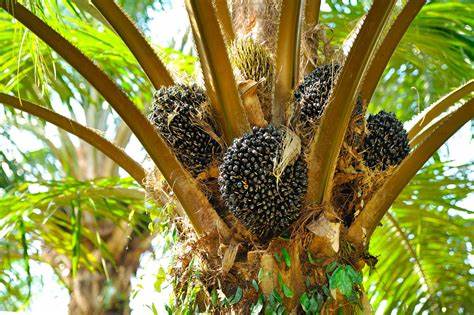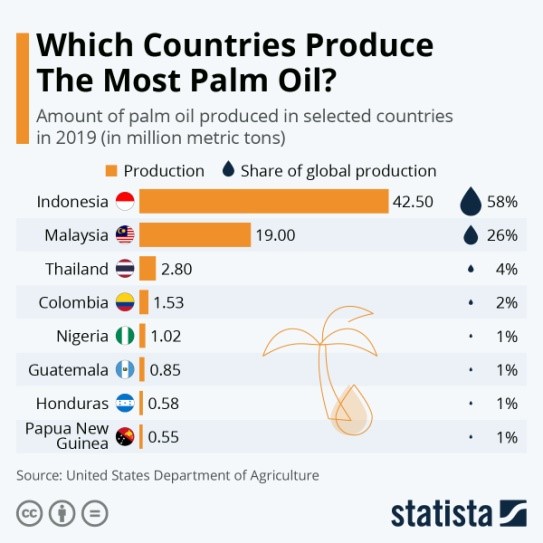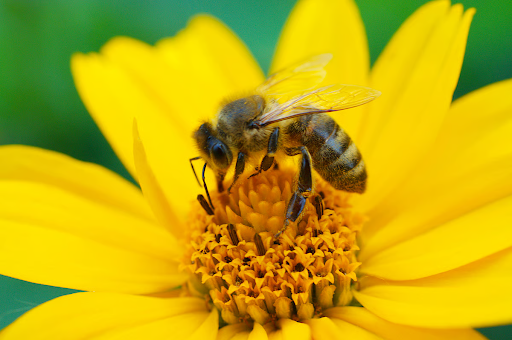Description

Disclaimer: Copyright infringement not intended.
Context
- Government of India has reduced the Agricultural Infrastructure Development Cess for Crude Palm Oil (CPO) from 7.5% to 5% with effect from 12th February, 2022.
|
Agri Infra Cess or Agriculture Infrastructure and Development Cess (AIDC) is a tax that the Indian government imposes on the commercial production of agricultural produce. The rate charged depends on the production capacity.
The money that the government will collect through this cess is used for infrastructure development in agriculture across the country.
|
Reduced AIDC
- Aim: To provide further relief to consumers and to keep in check any further rise in the prices of domestic edible oils due to rise in the prices of edible oils globally.
- Significance: After reduction of the agri-cess, the import tax gap between CPO and Refined Palm Oil has increased to 8.25%. The increase in the gap between the CPO and Refined Palm Oil will benefit the domestic refining industry to import Crude Oil for refining.
Steps taken to check the prices of edible oils
- Current basic rate of import duty: Extension of the current basic rate of import duty of zero percent on Crude Palm Oil, Crude Soyabean oil and Crude Sunflower Oil.
This measure will help in cooling down the prices of edible oils which are witnessing an upward trend in the international market due to lower availability and other international factors.
- Stock limit quantities on edible oils and oilseeds: Government had specified the stock limit quantities on edible oils and oilseeds for a period upto 30th June, 2022 under the Essential Commodities Act, 1955. This measure is expected to curtail any unfair practices like hoarding, black marketing etc. of edible oils and oilseeds in the market which may lead to any increase in the prices of edible oils.
Key Pointers- Palm Oil
- Palm oil is an edible vegetable oil derived from the mesocarp (reddish pulp) of the fruit of the oil palms.
- Along with coconut oil, palm oil is one of the few highly saturated vegetable fats and is semisolid at room temperature.
- It is resistant to oxidation and so can give products a longer shelf-life; it’s stable at high temperatures
- Hence, the oil is used in food manufacturing, in beauty products, and as biofuel.
- Its use in the commercial food industry in other parts of the world is widespread because of its lower cost.
Production
- Indonesia is the largest producer of palm oil,followed by Malaysia - both countries account for 84% of the worlds palm production. The largest producers of palm oil are Thailand, Colombia and Nigeria.
- Globally, palm oil supplies 35% of the world’s vegetable oil demand on just 10% of the land.
Consumption
- The largest consumer of palm oil are India (9.4 million tonnes) and Indonesia (6 million tonnes) – countries in which palm oil is traditionally used for cooking.
- The largest importer of palm oil is India (19 per cent), followed by the European Union (15 per cent, 7.3 million tonnes) and China (14 per cent) (Index Muni, 2020).
India specific
- In India, oil palm is being cultivated in 13 states. Potential states are Andhra Pradesh, Gujarat, Karnataka, Tamil Nadu and Bihar.
- Andhra Pradesh (83.5 percent) along with Telangana accounts for about 97 percent of India's 278,000 tonnes of crude palm oil production.
India and Oilseeds
- Stats: India is one of the major oilseeds grower and importer of edible oils. India’s vegetable oil economy is the world's fourth largest after the USA, China & Brazil.
- Coverage: The oilseed accounts for 13% of the Gross Cropped Area, 3% of the Gross National Product and 10% value of all agricultural commodities.
- Trend in production: This sector has recorded annual growth rate of area, production and yield @ 2.44%, 5.47% and 2.96% respectively during the last decade (1999-2009).
- Oilseed crops: The diverse agro-ecological conditions in the country are favourable for growing 9 annual oilseed crops, which include 7 edible oilseeds (groundnut, rapeseed & mustard, soybean, sunflower, sesame, and niger) and two non-edible oilseeds (castor and linseed).
- Consumption: During the last few years, the domestic consumption of edible oils has increased substantially and has touched the level of 90 million tonnes in 2011-12 and is likely to increase further.
- Demand: With per capita consumption of vegetable oils at the rate of 16 kg/year/person for a projected population of 1276 million, the total vegetable oils demand is likely to touch 20.4 million tonnes by 2017.

Need for reforms in oilseeds and palm oil
- Maximize production: A substantial portion of our requirement of edible oil is met through import of palm oil from Indonesia and Malaysia. It is, therefore, necessary to exploit domestic resources to maximize production to ensure edible oil security for the country.
- Area expansion: Oil Palm is comparatively a new crop in India and is the highest vegetable oil yielding perennial crop. With quality planting materials, irrigation and proper management, there is potential of achieving 20-30 MT Fresh Fruit Bunches (FFBs) per ha after attaining the age of 5 years. Therefore, there is an urgent need to intensify efforts for area expansion under oil palm to enhance palm oil production in the country.
- Source diversification: Tree Borne Oilseeds (TBOs), like sal, mahua, simarouba, kokum, olive, karanja, jatropha, neem, jojoba, cheura, wild apricot, walnut, tung etc. are cultivated/grown in the country under different agro-climatic conditions in a scattered form in forest and non-forest areas as well as in waste land /deserts/hilly areas. These TBOs are also a good source of vegetable oil and therefore need to be supported for cultivation.
National Mission on Edible Oils-Oil Palm (NMEO-OP)
- Under this mission the government will focus on increasing the oil palm cultivation to 10 lakh hectares by 2025-26 and 16.7 lakh hectares by 2029-30.
- The Centre will provide some financial assistance to farmers to ensure that they get a good price for their produce. It will work out the formula price and the viability price of the produce.
- The weather condition in North East and Andaman and Nicobar Islands is conducive for oil palm cultivationand this is the reason why the special focus of the mission will be on these two areas.
Other Concerns associated with Palm Oil Production
- Deforestation: Palm oil has been and continues to be a major driver of deforestation of some of the world’s most biodiverse forests, destroying the habitat ofalready endangered species like the Orangutan, pygmy elephant and Sumatran rhino.
- GHGs: This forest loss coupled with conversion of carbon rich peat soils are throwing out millions of tonnes of greenhouse gases into the atmosphere and contributing to climate change.
- Labour exploitation: There remains some exploitation of workers and child labour.
Way Ahead
Enforcement of RSPO standards
- Palm oil need to be produced more sustainably.
- The Roundtable of Sustainable Palm Oil or RSPO was formed in 2004in response to increasing concerns about the impacts palm oil was having on the environment and on society.
- The RSPO has a production standard that sets best practices producing and sourcing palm oil.
- Companies can be enforced to not just follow the basic RSPO standard but get independently verified against the new RSPO NEXT standard or the Palm Oil Innovation Group (POIG) Charter.
- RSPO NEXT and POIG include tougher criteria on issues.
Other steps
- Zero deforestation (including of secondary forest)
- No planting on peat
- Stricter targets to reduce greenhouse gas emissions
- Supporting smallholders with sustainability and business skills
- Companies can be enforced to be transparent in their use and sourcing of palm oil.
- No new planting in place of primary forest or areas of high conservation value since 2005.
- Free, prior and informed consent of local peopleto plant palm oil on their land.
- The obligation to measure and reduce climate change emissions.
- A prohibition on the use of fire to clear land.
- A requirement to keep soils healthy and to prevent erosion.
- Safe pesticide use.
- Decent working conditions and wages.
- Compliance with local, national and international laws.
Press Information Bureau (pib.gov.in)









